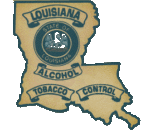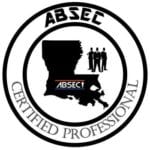What is Safe Serve Certification?
Safe Serve Certification is a must-have for those in the food service industry. It educates on topics like proper food storage, temperature control, and sanitation practices. This ensures workers are equipped to stop foodborne illnesses and lower health risks linked to wrong food handling.
The program is also adaptable – regulations may vary depending on the location but the standardization of Safe Serve Certification means you’ll be trained regardless of where you go.
It’s been important in reducing infectious diseases caused by improper food handling – like E coli and salmonella. So get certified in safe serve and become the MVP of your workplace – expertly avoiding food poisoning.
Benefits of Safe Serve Certification
Getting certified in Safe Serve offers many advantages. Here are just some of the benefits:
- Maintains food safety.
- Reduces legal risks/fines.
- Enhances credibility.
- Improves job prospects.
- Easy renewal process.
Plus, you’ll learn how to identify dangers and cut them down. Remember though, certification isn’t the end of learning. Stay up-to-date with new tech and standards.
Pro Tip: Certifications expire – don’t let yours run out! Get certified to keep your customers safe from salmonella.
How to obtain Safe Serve Certification
To obtain your Safe Serve Certification with ease, you need to meet certain requirements and follow specific steps. These include having a basic knowledge of food handling practices, completing an accredited training program, and passing the final exam. Read on to discover the two sub-sections that explain the necessary requirements and steps for obtaining your Safe Serve Certification.
Requirements for Safe Serve Certification
To get Safe Serve Certified, there are certain requirements that must be met. These are to make sure the individual has a good knowledge of food safety. The first one is to take an approved food safety course. This can be done online or in person and covers topics like sanitation, cross-contamination prevention, and cooking temperatures.
The second requirement is passing an exam with a score of at least 75%. This shows understanding of the material taught in the course.
The third requirement is to pay a certification fee. This gives access to the Safe Serve Certificate, which is valid for 5 years.
Note: Some states or municipalities may have extra requirements. Before getting certified, it’s best to check with the local health department.
Getting Safe Serve Certified is great for those looking for employment in food service or hospitality industries. It increases job opportunities and shows commitment to safe food handling.
To get Safe Serve Certified, study for the exam and look for practice tests or review materials. It is also important to stay up to date on food safety guidelines and regulations.
Steps to obtain Safe Serve Certification
To become Safe Serve certified, there are certain steps that must be followed. These include:
- Get the required study materials.
- Finish any training courses needed.
- Make an appointment to take the exam.
- Achieve a minimum score of 75% on the exam.
- Receive the certificate.
- Meet any additional requirements.
Be aware – some states may have extra steps. Employers may also require Safe Serve certification to hire you. According to ServSafe.com, 5 million+ foodservice professionals have been certified. Don’t forget – your Safe Serve Certification will expire, so keep up with your renewal.
Renewal of Safe Serve Certification
To renew your Safe Serve certification and ensure your continued education on safe food handling practices, there are a few things you need to know. Specifically, you need to be aware of the duration of your certification and the renewal process for maintaining your Safe Serve certification.
Duration of Safe Serve Certification
Are you a certified Safe Serve? Wonder if it’s still valid? The duration of your certification varies. It could be three to five years. Some states require yearly renewing or recertifying. Some courses give you lifetime certifications, while others need extra training after a set amount of time. So, check your state’s food safety certifications regulations.
Even if your Safe Serve Certification hasn’t expired, you might need extra training or earlier renewal due to regulatory changes. Keep up-to-date with food safety regulations to avoid expiration-related issues.
Pro Tip: Keep track of your Safe Serve Certification’s expiration date and plan to renew – even before it’s due. Renewing your Safe Serve Certification is a must for public health – even though it’s not glamorous!
Renewal process for Safe Serve Certification
If you want to keep your Safe Serve Certification, you need to go through the renewal process. Here’s how:
- Do the training: Attend an approved course and read the materials. Make sure you understand food safety protocols.
- Take the test: Pass the ANSI-approved certification exam with 75% or higher.
- Renew your cert: Pay fees and submit paperwork. Most certifications last five years.
Different providers may have different rules, so check the specs. Consider taking extra courses to stay up to date and improve your food safety understanding. Without Safe Serve Certification, your food could be as risky as talking to your ex at a friend’s wedding.
Importance of Safe Serve Certification in the Food Industry
Secure your customers with a Safe Serve Certification! It’s not just important for customer satisfaction, it’s also legally required. This training will increase knowledge of health hazards, reduce customer complaints and lawsuits, and show that you care.
Certified staff will be more aware of guidelines, decreasing the risk of contamination or illness outbreaks. To stay certified, organizations should offer refresher courses and invest in the right equipment and cleaning regimes. That way, you can provide a safe work environment and guarantee customers a healthy meal.
So, don’t take the chance! Get certified in Safe Serve today.
Conclusion
Do you know the importance of food safety and hygiene? Obtain the Safe Serve Certification to gain knowledge in food preparation, cooking, and sanitation practices. This can be used in places like restaurants, cafeterias, and even home kitchens.
The Safe Serve Certification training focuses on four key areas: personal hygiene, cross-contamination prevention, time and temperature controls, and cleaning and sanitation. Mastering these areas can prevent food-related illnesses.
Plus, getting a Safe Serve Certification opens up new job opportunities and makes you more valuable at your job. It stops lawsuits from customers getting sick due to inadequate food safety protocols.
Don’t miss out! Become a part of the solution and combat foodborne illnesses. Take action and ensure safety for your customers and loved ones with a Safe Serve Certification.
Frequently Asked Questions
1. What is Safe Serve certification?
Safe Serve certification is a food safety certification program that is designed to teach food handlers the proper techniques for storing, preparing, and serving food in a safe and sanitary manner.
2. Who needs Safe Serve certification?
Anyone who handles food on a regular basis, including food service workers, chefs, and managers, should have Safe Serve certification to ensure that they have the knowledge and skills to keep food safe and prevent foodborne illness.
3. How do I get Safe Serve certified?
You can get Safe Serve certified by completing a training course that covers the key concepts of food safety and by passing a certification exam. Many different organizations, including the National Restaurant Association and local health departments, offer Safe Serve training and certification.
4. How long does Safe Serve certification last?
Safe Serve certification is typically valid for five years. After that time, food handlers will need to complete a recertification course and exam to maintain their certification.
5. What topics are covered in Safe Serve training?
Safe Serve training covers a wide range of topics related to food safety, including proper handwashing, preventing cross-contamination, controlling food temperature, and identifying food hazards. The training also teaches food handlers how to handle food allergies and how to deal with customers who have special dietary needs.
6. Is Safe Serve certification required by law?
Safe Serve certification is not required by federal law, but many states and local health departments have their own requirements for food handler training and certification. It’s important to check with your local health department to see what the requirements are in your area.











